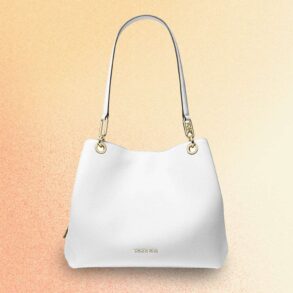Christian Vierig/Getty Images
- “Superfakes” are gaining popularity as high-quality designer knockoffs.
- Gen Z has embraced knockoffs as a way to access luxury fashion for a fraction of the cost.
- Social media and the pandemic’s e-commerce boom have bolstered the knockoff market.
There’s a new type of knockoff that’s making it even harder to ensure your Gucci handbag or Yeezy sneakers are authentic.
Designer brands have been combatting knockoffs for decades, but a rising category of “superfakes” can trick the most experienced experts. Fabricators have become increasingly savvy at making a product look eerily similar to the real thing.
Here’s how superfakes became so difficult to tell apart from the real thing.
What is a superfake?
While knockoffs of designer clothing and accessories have been around for more than a century, they gained prominence in the 80s and 90s as logos became a status symbol on everything from Juicy Couture tracksuits to Tommy Hilfiger bucket hats.
Those who couldn’t afford the designer price tags went to thriving street markets like Canal Street in New York City, where sellers hawk counterfeit handbags, wallets, and shoes. Most of these fakes weren’t fooling anyone. They may have had a Gucci or Chanel logo, but they were cheaply made and often had tell-tale signs of inauthenticity, like fake leather, inconsistent stitching, or low-quality hardware.
Yves Forestier/Getty Images
But superfakes are not your Canal Street knockoff. Chinese manufacturers have become increasingly skilled at replicating designer goods in such detail that even the most experienced authenticators can struggle to decipher a superfake.
According to a New York Times article, these manufacturers are known to source leather from some of the same Italian suppliers as the fashion houses and often buy the real designer handbags to study how they are made.
How did superfakes get so popular?
Social media and the pandemic’s e-commerce boom have bolstered the knockoff market. Gen Z consumers are increasingly interested in luxury products and are fueling a movement that embraces knockoffs as subversive.
These young shoppers, born between 1997 and 2012, wear fakes with pride. They’ve decided that it’s cool to buy dupes and knockoffs, opposed to previous generations that deemed them taboo. TikTok puts Gen Z’s obsession on full display; there are thousands of videos on where to shop for dupes of handbags, cosmetics, and sneakers.
It’s important to note that dupes and knockoffs are not the same. A dupe is simply a cheaper product that looks similar to a designer item, but does not infringe on a brand’s intellectual property or trademark. However, any product that intentionally replicates a brand’s product, using its logo, name, or intellectual property is considered a knockoff. Selling counterfeits is illegal in the US and in some countries, such as France and Italy, it is illegal to wear them.
Where do people buy superfakes?
While they are cheaper than the real thing, superfakes are more expensive than an average knockoff. The price of a real Hermes Birkin bag starts at $10,000, while a superfake can cost up to $2,000.
Buying a superfake handbag also isn’t as easy as purchasing an average knockoff. According to a TikTok video by creator Charles Gross, you usually have to know someone who has purchased a superfake to get a seller’s contact information. However, there are also Reddit threads devoted to the best sellers. Typically, bags are made to order and the seller sends quality-control photos throughout the process.
In 2020, the fashion industry lost more than $50 billion in potential sales because of counterfeit merchandise. Both designer brands and third-party marketplaces have invested millions in combating counterfeits, but the issue is so widespread that it’s impossible to stop them all.
This post was originally published on this site be sure to check out more of their content.










